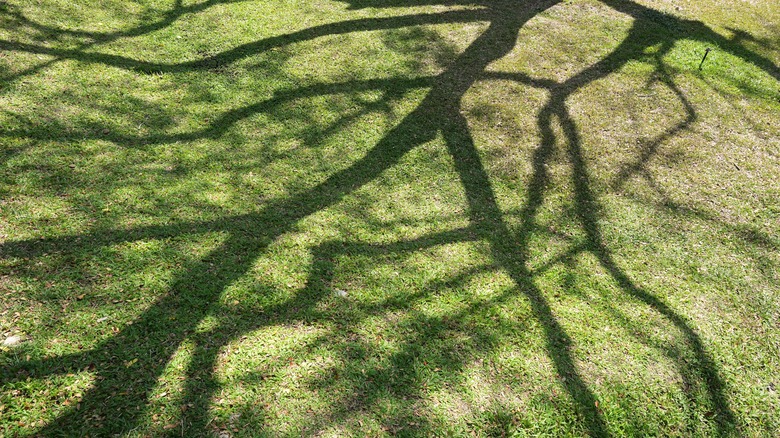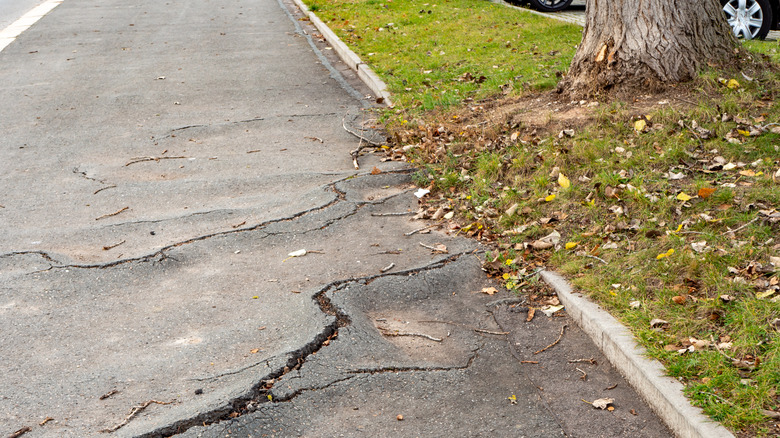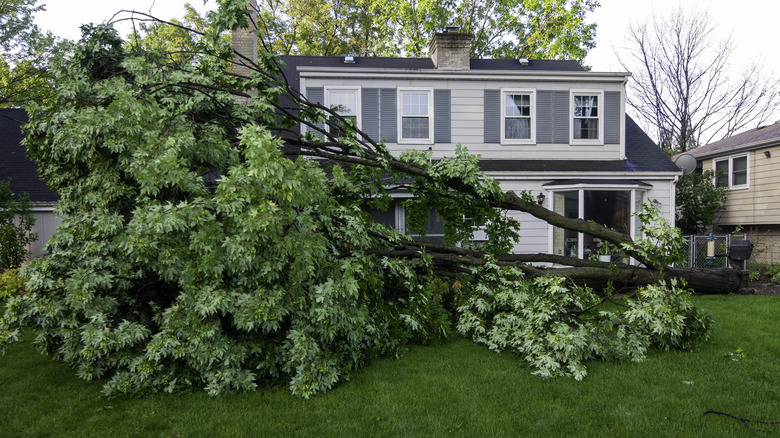Think Twice Before Planting This Fast-Growing Shade Tree In Your Yard. Here's Why
When establishing your yard, it's tempting to select a fast-growing shade tree that will quickly give a mature appearance to your landscaping, but not all shade trees are created equal. In fact, there's one in particular that you might want to pass on — the silver maple. Not only is this species of maple one of the lesser varieties in terms of aesthetic value, but it also has destructive, shallow roots. In addition, its wood is weak and susceptible to breaking from, and causing, storm damage. It's quite simply more trouble than it's worth.
The silver maple is known by several other names, including the swamp maple and water maple, possibly due to its propensity to grow in wet soil. It is hardy everywhere from Zones 3 to 9, meaning it can be found in almost every state of the continental U.S. It can have an irregular or branched trunk structure, and at maturity can be as tall as 70 feet and as wide as 50 feet, making it an imposing tree. However, while the silver maple might be a suitable addition to a muddy riverbank, it's not a great choice for your yard or anywhere close to your home.
Shallow roots are invasive
As a fast-growing tree, the silver maple also has fast-growing roots. This root system is extremely shallow, usually surfacing above ground at several points. Right off the bat, this creates problems for neighboring plants as the tree roots crowd those other plants out of the area to make more room for themselves. This tendency is sometimes referred to as "weediness," as the tree spreads and takes over like a weed. The silver maple also earns this moniker for its excessive, messy seeding which, while not a serious problem, still could lower the curb appeal of your home, for example, if you're looking to sell it.
The worst aspect of these shallow root systems, however, is that they can break apart your home's foundation, sidewalks, and even sewer pipes or septic systems. The trouble this creates for your home and yard is not only potentially disgusting, it's also incredibly costly. Better to avoid this risk altogether by opting not to plant a silver maple in your yard. The Southern sugar maple, on the other hand, is another quick-growing shade tree but with lovely fall foliage and, most importantly, roots that are non-invasive. It might be a better pick for your landscaping.
Silver maples can't withstand extreme weather
Because it's such a fast grower, the silver maple's wood is much weaker than many other trees, not building up its strength and durability over a long period before reaching maturity. In fact, the silver maple is considered (and sold as) a "soft maple," and its limbs are often brittle. All of these factors together mean that any extreme weather event, from snow and ice to high winds and rain, can wreak havoc on the tree, felling branches or even cracking the trunk structure. With a silver maple in your yard, the risk of a severe summer storm causing tree branches to damage your roof, windows, or other parts of your home is fairly high — especially since these trees grow to be so tall and have such a wide canopy. If you simply must have a shade tree in your yard, look for one that's a slower grower, with stronger wood and deeper root systems, anchoring it firmly in the ground, like an oak.
Of course, if you already have a silver maple in your yard, there are ways you can mitigate the potential risks of storm damage. Invest in consultation with a certified arborist who can periodically evaluate your tree for weak spots or damaged limbs, pruning as needed. If your tree is young enough, regular pruning can even prevent the tree's natural tendency to split its trunk structure, nurturing it instead into a much more solid, single, central trunk.


